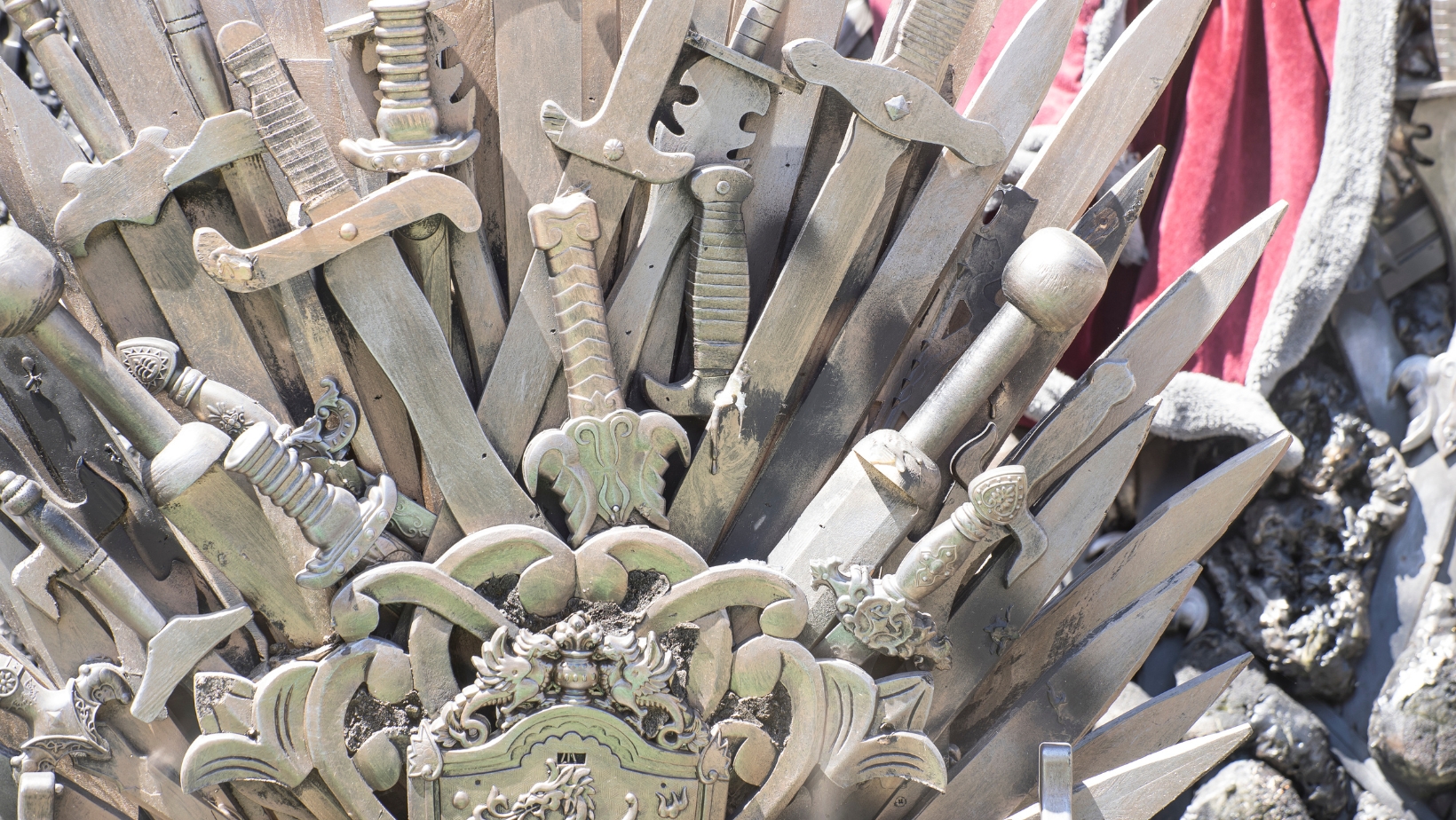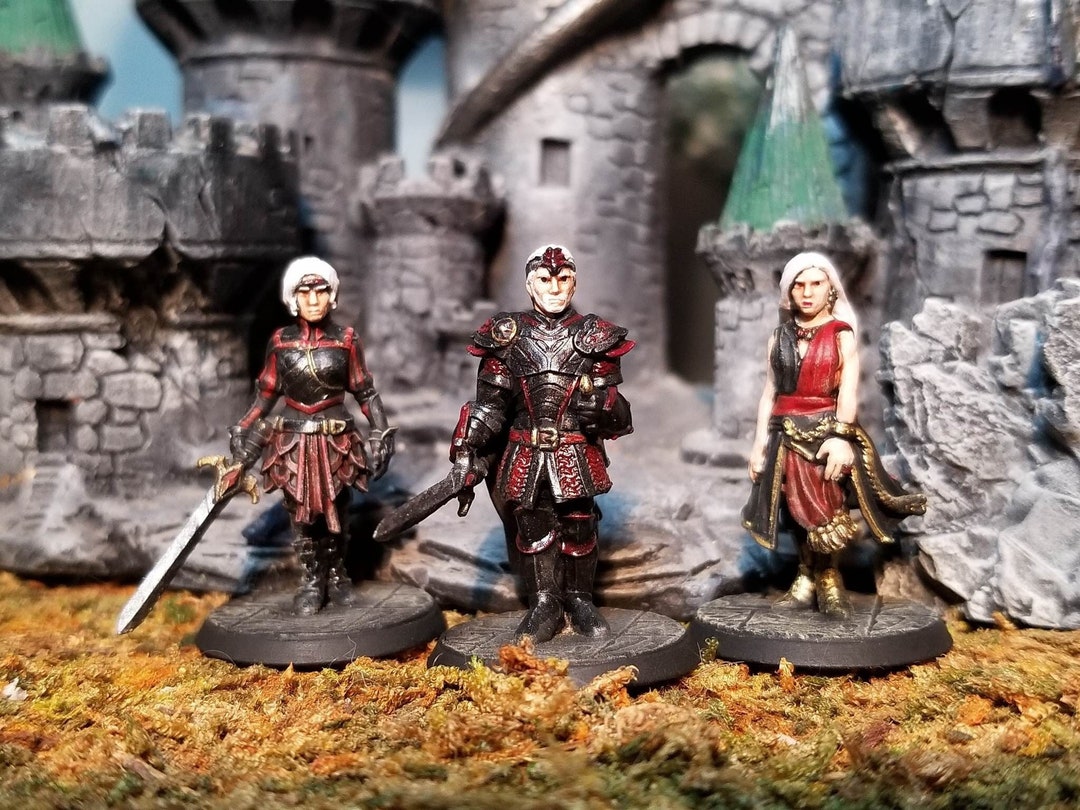The world of Westeros, as crafted by George R.R. Martin, is replete with intricate family trees, power struggles, and customs that often defy modern sensibilities. Among the most talked-about and frequently questioned traditions of House Targaryen is their practice of incestuous marriages. Fans of "Game of Thrones" and its captivating prequel, "House of the Dragon," often find themselves asking: Does Aegon marry his sister? This question isn't as straightforward as it seems, as multiple Aegons have graced the annals of Westerosi history, each with their own unique marital circumstances.
From the very first Targaryen king to the ill-fated monarchs of the Dance of the Dragons, the union of siblings was not merely tolerated but often encouraged, seen as a means to preserve the purity of their Valyrian bloodline and consolidate power. Let's delve deep into the lore to explore this captivating topic, examining the various instances where an Aegon took his sister as a wife, the motivations behind such unions, and their profound impact on the political landscape of the Seven Kingdoms.
Table of Contents:
- The Enduring Question: Did Aegon Marry His Sister?
- The Genesis of a Tradition: Aegon the Conqueror and His Sisters
- Aegon II and Helaena: A Forced Union in House of the Dragon
- The Broader Targaryen Incestuous Practices
- The Logic Behind Incestuous Marriages in Westeros
- The Consequences and Controversies of Targaryen Incest
- Aegon II's Reign and the Dance of the Dragons
- Beyond the Throne: Other Aegons and Their Sisters
- Conclusion: The Complex Legacy of Targaryen Unions
The Enduring Question: Did Aegon Marry His Sister?
The query, "Does Aegon marry his sister?" has been a subject of intrigue and speculation among fans of the popular book series "Game of Thrones" by George R.R. Martin, as well as its television adaptation, "House of the Dragon." The short answer is a resounding yes, but the context and reasons vary significantly depending on which Aegon one is referring to. The Targaryen dynasty, known for its dragons and distinctive silver hair, also became infamous for its practice of marrying within the family, often between siblings.
This tradition, while shocking to modern sensibilities, was deeply rooted in their Valyrian heritage and served multiple purposes within the complex political landscape of Westeros. It wasn't merely a matter of personal preference but a strategic decision, sometimes driven by duty, sometimes by love, and almost always by the desire to consolidate power and preserve a unique bloodline. Understanding this practice is crucial to grasping the internal dynamics and external conflicts that defined the Targaryen reign.
The Genesis of a Tradition: Aegon the Conqueror and His Sisters
To truly understand the question, "does Aegon marry his sister," we must first look to the very beginning of the Targaryen dynasty in Westeros: Aegon I Targaryen, often known as Aegon the Conqueror. He was the architect of the Seven Kingdoms, the first Lord of the Seven Kingdoms, and the founder of the House of the Dragon on the Iron Throne. His actions set the precedent for centuries of Targaryen rule, including their unique marital customs.
The Conqueror's Wives: Visenya and Rhaenys
Aegon I Targaryen famously married both of his sisters, Visenya and Rhaenys Targaryen. This practically set the path for his descendants to marry within the family. It was said that he married his elder sister Visenya out of duty, recognizing her formidable nature and strategic mind, which made her a fitting partner for a king. Visenya was a skilled warrior and dragonrider, embodying the stern and pragmatic side of Targaryen power.
Conversely, Aegon married his younger sister Rhaenys out of love. Rhaenys was known for her beauty, grace, and adventurous spirit, and it was widely believed that she was Aegon's favorite. Through her son with Aegon, Aenys I, the line of the dragonkings continued, with fifteen of the sixteen Targaryen kings being direct descendants of Rhaenys and Aegon. This dual marriage served to strengthen his claim, consolidate power, and ensure the continuation of the Targaryen bloodline, believed to be uniquely capable of bonding with dragons.
Aegon II and Helaena: A Forced Union in House of the Dragon
Centuries after Aegon the Conqueror, the question of "does Aegon marry his sister" resurfaces prominently with Aegon II Targaryen, a central figure in "House of the Dragon." Aegon II, the eldest child and son of King Viserys I Targaryen by his second wife, Queen Alicent Hightower, was indeed married to his sister, Princess Helaena Targaryen. This union, depicted in "House of the Dragon" season 1, became a significant point of contention and intrigue for fans, especially regarding the underlying motivations.
The Political Chessboard: Why Aegon II Married Helaena
In the complex political climate leading up to the Dance of the Dragons, the marriage of Aegon II and Helaena was far from a simple love match. As said, marriages in the Seven Kingdoms tend to be political in nature, and that still holds true for the Targaryens, who may practice incest but still find ways to make marriage a political tool. In this case, however, Aegon was forced to marry his sister not only because it was his duty as the eldest son of the King but also to keep Helaena away from Rhaenyra’s family.
Queen Alicent Hightower, Aegon's mother, was deeply concerned about the succession and sought to secure her children's position against Rhaenyra's claim. Marrying Aegon to Helaena ensured that any potential children would be pure-blooded Targaryens and, crucially, would not introduce rival claims or alliances from other powerful houses. This was a very odd decision in the eyes of many, including some characters within the story and fans watching the show. There were a lot more options for Aegon to be married with someone other than his own sister, which seemed unnecessary from a purely strategic standpoint if one considers broader alliances.
For instance, a strategic marriage for Aegon could have been with a Stark, potentially securing the North's support for his claim. Alternatively, marrying Helaena to a Lannister or Tyrell could have brought immense wealth and military might to his cause. However, the decision to keep the bloodline "pure" and prevent any external influence on the royal children ultimately prevailed, driven by Alicent's desire to protect her lineage and secure the throne for her son, thereby shaking the politics around the coveted Iron Throne.
The Royal Offspring: Children of Aegon II and Helaena
Despite the contentious nature of their union, Aegon II and Helaena Targaryen sired four children: Jaehaerys, Jaenaera, Jaehaera, and Maelor Targaryen. These children, direct descendants of both King Viserys I and Queen Alicent, were crucial to the succession debates that fueled the Dance of the Dragons. Jaehaerys, as the eldest son, was seen by the Greens (Alicent's faction) as the rightful heir to the Iron Throne after Aegon II, further intensifying the conflict with Rhaenyra's Blacks.
Beyond his legitimate children with Helaena, the lore also notes that Aegon II had other offspring, including two bastards: a boy he had fathered on a girl whose maidenhead he had won and a girl he had fathered on one of his mother's servants. This detail adds another layer to Aegon II's character, portraying him as a king who, despite his royal duties and forced marriage, also indulged in personal desires, further complicating the image of a monarch bound by tradition and political necessity.
The Broader Targaryen Incestuous Practices
While the question "does Aegon marry his sister" primarily focuses on specific kings named Aegon, it's vital to recognize that this practice was not exclusive to them. It was a pervasive and defining characteristic of House Targaryen throughout their rule in Westeros. The Targaryens, hailing from Old Valyria, carried with them the tradition of marrying siblings to preserve their unique bloodline, believed to be the source of their ability to control dragons and their resistance to certain diseases.
This tradition extended beyond direct siblings to other close familial relations. For example, Rhaenyra and Daemon Targaryen also got married despite having a relationship as a niece and an uncle. Here's how Daemon was able to marry his niece, Rhaenyra, in "House of the Dragon": it was a union born of mutual desire, political calculation, and a disregard for conventional Westerosi norms, further cementing the Targaryen's reputation for unconventional unions. These instances highlight that while the Aegons might be the most prominent examples, the practice of incest was a deeply ingrained aspect of Targaryen culture, setting them apart from the other noble houses of Westeros.
The Logic Behind Incestuous Marriages in Westeros
From a modern perspective, the idea of marrying one's sister, as Aegon and many other Targaryens did, is deeply unsettling. However, within the context of Westeros and the Targaryen dynasty, there were several compelling, albeit controversial, reasons for this practice:
- Preservation of Bloodline: The primary stated reason was to keep the blood of the dragon pure. The Targaryens believed their unique connection to dragons and their Valyrian heritage would be diluted if they married outside their family. This belief was a cornerstone of their identity and power.
- Consolidation of Power: Marrying within the family prevented powerful rival houses from gaining influence over the crown through marriage alliances. If a king married a Stark, Lannister, or Tyrell, those houses would gain a direct link to the throne and potentially exert undue influence. Incestuous marriages kept power strictly within the Targaryen family.
- Duty and Tradition: For many Targaryens, marrying a sibling was simply their duty, a tradition passed down from Aegon the Conqueror. It was expected of them, especially for those in the direct line of succession.
- Avoiding Political Entanglements: While external marriages could forge alliances, they could also create complex political debts and rivalries. Marrying a sibling simplified the political landscape by limiting external obligations.
- Love (in some cases): Though often driven by duty, some Targaryen incestuous unions were indeed born of genuine affection, as seen with Aegon I and Rhaenys. In a world where choice was often limited, finding love within the expected marital pool was sometimes a fortunate outcome.
These reasons, while not morally justifiable by today's standards, provided a logical framework for the Targaryens to maintain their unique status and power in Westeros for nearly three centuries.
The Consequences and Controversies of Targaryen Incest
While the Targaryens upheld their incestuous traditions for reasons of blood purity and power, these practices were not without significant consequences and controversies. The most commonly cited drawback, both within the lore and among fans, is the increased risk of madness and genetic deformities. While not every Targaryen who married a sibling exhibited these traits, the saying "every time a Targaryen is born, the gods toss a coin" alludes to the unpredictability of their lineage, often attributed to their inbreeding.
The moral implications also sparked debate, even within Westeros. The Faith of the Seven, the dominant religion, largely condemned incest, viewing it as an abomination. This often put the Targaryens at odds with the religious institutions and the common folk, who saw their practices as unnatural. This tension occasionally erupted into open conflict, such as the Faith Militant uprising during the reign of Maegor the Cruel, further highlighting the societal friction caused by their unique customs.
Furthermore, while intended to consolidate power, incestuous marriages sometimes contributed to internal family conflicts, as seen vividly in the Dance of the Dragons. The very closeness of the family, combined with fierce ambition and disputed successions, could lead to more bitter and destructive feuds, as loyalties were often divided between closely related claimants. The question of "does Aegon marry his sister" is thus intertwined with the very fabric of Targaryen tragedy and triumph.
Aegon II's Reign and the Dance of the Dragons
Aegon II Targaryen, the sixth Targaryen king of the Iron Throne, found his reign defined by the civil war known as the Dance of the Dragons. He was the son of Viserys I Targaryen, the fifth Targaryen ruler, and Alicent Hightower. His claim to the throne was directly challenged by his half-sister, Princess Rhaenyra Targaryen, whom King Viserys I had named his heir. As a result, Aegon and Rhaenyra fought for the crown in the brutal and devastating civil war that tore the realm apart.
Aegon II's marriage to Helaena, his sister, was a key element in the political maneuvering that led to this conflict. Alicent and her supporters, known as the Greens, believed that a male heir, especially one married to a pure-blooded Targaryen princess, had a stronger claim to the throne than Rhaenyra, despite Viserys's decree. Helaena served as Aegon II's queen, providing him with heirs and a veneer of legitimacy within the traditional framework. The tragic fate of their children, particularly Jaehaerys, became a rallying cry for the Greens and fueled the cycle of revenge that defined the war. The "House of the Dragon" season 2 release date and schedule of episodes promise to delve even deeper into the consequences of this pivotal marriage and the ensuing war.
Beyond the Throne: Other Aegons and Their Sisters
The name Aegon is quite common within the Targaryen lineage, and the practice of marrying sisters wasn't limited to just the kings who sat on the Iron Throne. For instance, an earlier Aegon Targaryen, a member of House Targaryen during the Century of Blood, the son of Lord Gaemon and Lady Daenys Targaryen of Dragonstone, also married his sister, Elaena. Together they had two sons. This Aegon and Elaena also had a younger sister who married a petty lord, showing that while sibling marriage was preferred for direct heirs, other Targaryens might marry outside the family depending on their status and political needs.
These instances reinforce that the question "does Aegon marry his sister" isn't about a single event but a recurring pattern throughout Targaryen history. It highlights the deep-seated nature of this tradition, which extended beyond the most famous kings and queens, permeating the very fabric of their noble house and defining their unique identity in the world of Westeros.
Conclusion: The Complex Legacy of Targaryen Unions
The question, "Does Aegon marry his sister?" leads us down a fascinating path through the history of House Targaryen. The answer, unequivocally, is yes – multiple Aegons throughout the dynasty's long and storied history took their sisters as wives. From Aegon the Conqueror establishing the precedent with Visenya and Rhaenys, setting the very foundation for the Targaryen rule, to Aegon II's politically charged union with Helaena in "House of the Dragon," these marriages were central to their identity and their grip on power.
These incestuous unions were not merely personal choices but complex decisions driven by a desire to preserve a unique bloodline, consolidate power, and fulfill perceived duties. While controversial and often leading to tragic consequences, they were a defining characteristic of the dragon-riding kings and queens of Westeros. Understanding this intricate aspect of Targaryen lore is essential to appreciating the depth and complexity of George R.R. Martin's world.
What are your thoughts on the Targaryen practice of marrying siblings? Do you think it was a necessary evil for their rule, or a fatal flaw? Share your insights in the comments below! And if you're eager to delve deeper into the intricate world of Westeros, be sure to explore our other articles on Targaryen history and the ongoing saga of "House of the Dragon."


